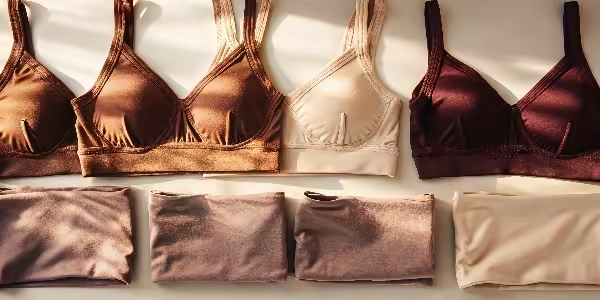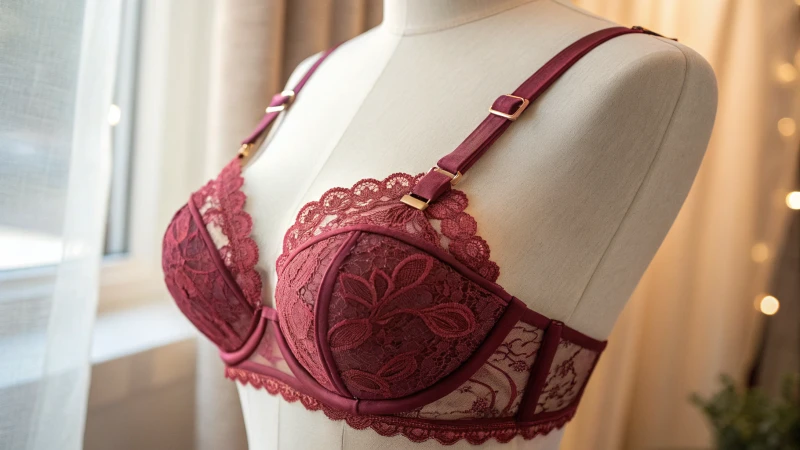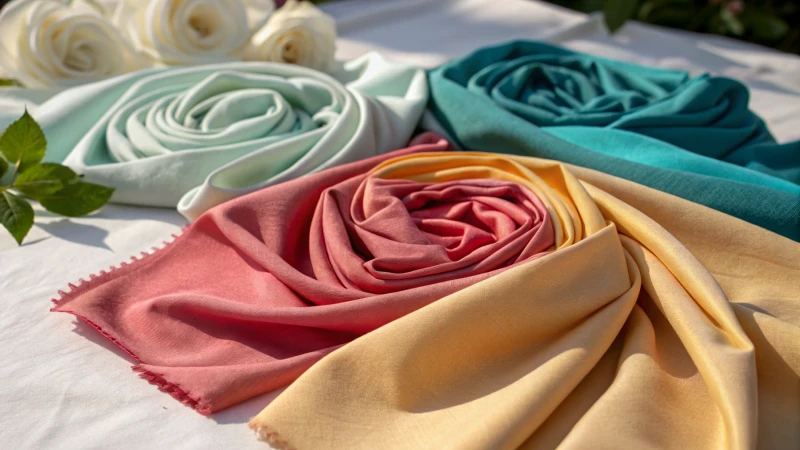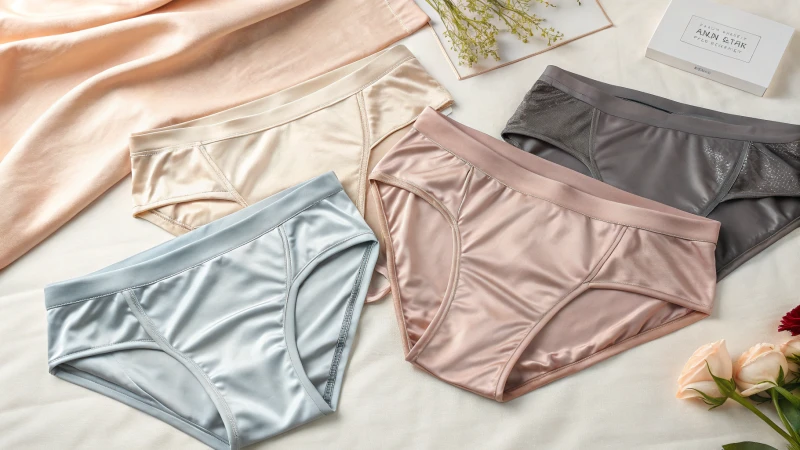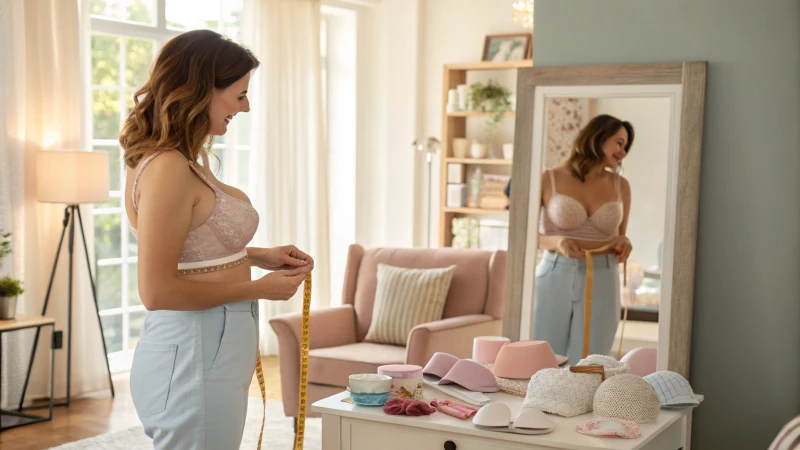
Are you tired of uncomfortable bras that leave you feeling unsupported by day's end?
To find a good support bra, ensure you get professionally measured to know your true band and cup size, focus on a snug band fit, choose full-coverage cups for better lift, and opt for materials that offer both breathability and durability.
I remember the first time I wore a bra that actually fit well—it was like a weight had been lifted off my shoulders, literally! Before that, I'd spent years struggling with bands that rode up or cups that seemed determined to do their own thing. But once I got professionally measured and learned what to look for, everything changed.
Understanding the subtle nuances of bra design can really make a difference. For instance, choosing bras with wide straps and multiple hook options gives more stability and comfort. It's these little details that cater to unique needs and transform a simple piece of clothing into an essential part of feeling good all day.
A snug band fit is crucial for bra support.True
A snug band provides the primary support in a bra, ensuring stability.
Full-coverage cups reduce lift in bras.False
Full-coverage cups enhance lift by distributing breast tissue evenly.
How Does Bra Size Impact Support?
Ever wondered why finding the right bra can feel like a never-ending quest?
Bra size is crucial for support, with the band providing most of it and cup size ensuring lift and coverage. A well-fitted bra reduces discomfort and improves posture.

The Importance of Correct Sizing
I remember the first time I got properly measured for a bra; it was like discovering a new world. Suddenly, the nagging aches and constant readjustments disappeared. Choosing the right bra size1 really is the foundation of comfort. A good fit distributes weight evenly, easing shoulder and back pressure. It’s all about getting that band and cup measurement just right to avoid any annoying spillage or gaping.
Role of the Band in Support
I learned the hard way that the band does most of the heavy lifting—about 80% of it! It should hug your torso snugly but not so tight that it leaves marks or makes you uncomfortable. When my band was too loose, I found myself slouching more, which led to unnecessary back pain. So, making sure it's firm but comfortable really made a difference.
| Feature | Importance |
|---|---|
| Snug Fit | Ensures stability and support |
| Horizontal | Prevents shifting and riding up |
| Adjustable | Customizes fit over time |
Cup Size and Breast Support
Finding the right cup size can be as tricky as solving a puzzle. Too small, and there’s that awkward spillage; too big, and the support is just gone. I’ve always favored full-coverage bras because they maintain my shape beautifully and take the strain off breast tissue. Underwires add that extra lift I sometimes need.
The Impact of Fabric and Design
Then there’s fabric choice. I once bought this stunning lace number, only to find it was scratchy and unsupportive for everyday wear. Since then, I’ve stuck to breathable materials with some stretch—they’re comfy without skimping on support. Designs with wider straps are a blessing too, especially for those long days.
Breathable fabrics with some elasticity offer a comfortable fit without sacrificing support. Designs with wider straps enhance the bra's effectiveness2.
Tailoring the Fit: Adjustable Features
Life changes, bodies change—so should our bras! I love bras with adjustable straps and multiple hooks because they grow with me. This adaptability is key as the band naturally stretches out over time.
Purpose-Specific Bra Choices
Different days call for different bras, right? I learned early on that sports bras are essential for my workouts. They offer maximum support to keep everything in place, preventing discomfort from excessive movement. For regular days, I opt for something designed for comfort without sacrificing style.
Explore3 how different designs cater to various needs, ensuring both style and functionality.
A snug band provides 80% of bra support.True
The band is crucial for support, distributing weight evenly.
Cup size has no effect on breast support.False
Proper cup size prevents spillage and supports breast shape.
What Are the Best Bra Styles for Larger Busts?
Ever felt like finding the perfect bra is as elusive as spotting a unicorn? Let's dive into the best options for larger busts that balance comfort, support, and style.
The best bra styles for larger busts include full-coverage bras, balconette bras, and minimizer bras. These styles offer top-notch support and comfort while naturally enhancing the bust's shape.
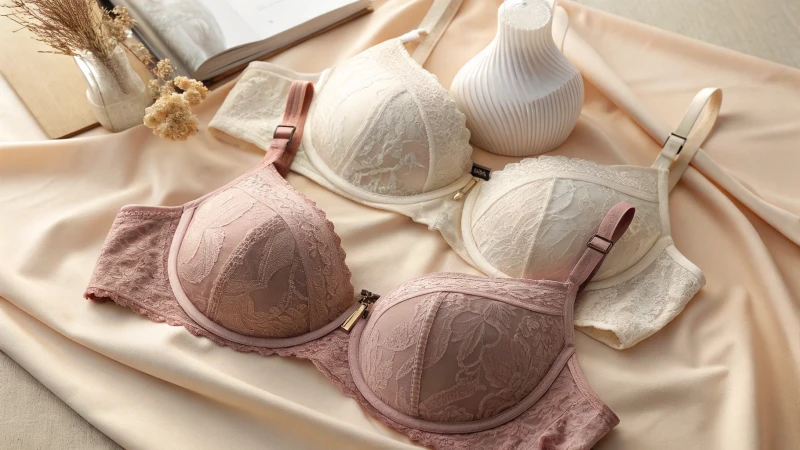
Understanding Different Bra Styles
Let me tell you, navigating the world of bras for a larger bust can be quite the journey. I remember my first attempt at finding a supportive bra felt like searching for a needle in a haystack. But over time, I discovered some styles that really made a difference:
Full-Coverage Bras: Think of these as your reliable best friend. They offer maximum support and minimize bounce, which is essential for all-day comfort. I once found one with reinforced underwire4 and wide straps, and it was like discovering a hidden treasure.
Balconette Bras: These are my go-to for when I want a little extra lift. The wide-set straps do wonders for enhancing the natural shape of the bust, perfect for those days when I want to wear something low-cut. Just make sure the band fits snugly to keep everything in place.
Minimizer Bras: These are fantastic for creating a smoother silhouette under clothing. Ideal if you want to slightly reduce projection but still keep that much-needed support. It’s like magic under fitted clothes.
| Style | Key Features | Best For |
|---|---|---|
| Full-Coverage | Maximum support, wide straps | Everyday wear |
| Balconette | Uplift, wide-set straps | Low-cut tops |
| Minimizer | Smoothing effect, reduced projection | Fitted clothing |
Key Factors in Bra Selection
When picking a bra, there are a few non-negotiables I've learned along the way:
Size and Fit: This is crucial. I used to think I knew my size until I got professionally measured—what a game-changer! Accurate measurement is key, so whether you go in-store or use online calculators5, get it right.
Material: Breathable fabrics with moisture-wicking properties can make or break your day, especially if you're like me and live an active lifestyle.
Adjustability: My body changes with the seasons, and adjustable straps and hooks have been lifesavers. They let me customize the fit as needed.
Understanding these elements has truly transformed my shopping experience6. Now, I always prioritize bras that feel as good as they look, helping me maintain confidence and comfort every day.
Full-coverage bras minimize bounce effectively.True
Full-coverage bras are designed to provide superior support, minimizing bounce.
Minimizer bras increase breast projection.False
Minimizer bras redistribute breast tissue to reduce projection, not increase it.
How Do You Properly Measure for a Bra?
Let's chat about the difference a perfectly fitted bra can make. It goes beyond comfort—think confidence, poise, and feeling like your best self. Here's my go-to guide for measuring accurately.
To properly measure for a bra, grab a soft tape measure and find your band size by measuring snugly under your bust, then get your cup size by measuring over the fullest part of your bust. Adjust for a fit that feels just right.
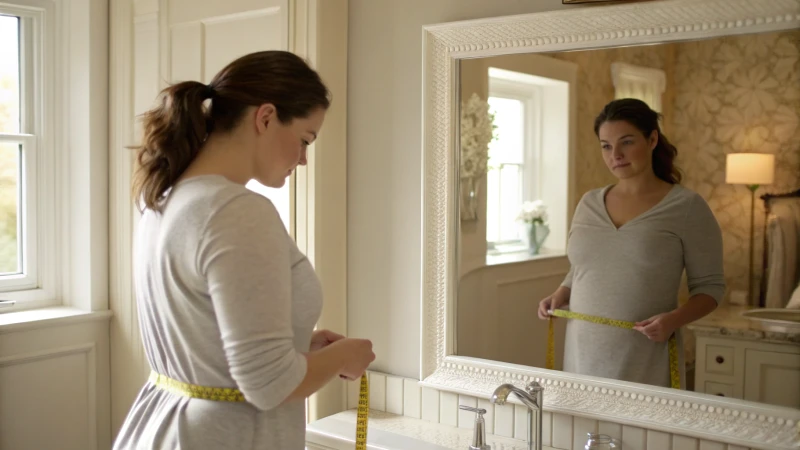
Understanding Bra Measurements
Getting the right bra fit is like a little victory every day. I can't tell you how many times I've gone through the motions only to realize I was wearing the wrong size all along! But once you get it right, it's like a whole new world opens up—less discomfort, more support, and an overall better day. All you need is a soft measuring tape and a mirror.
Step-by-Step Guide to Measuring
Determine Band Size: I've found it helpful to stand in front of a mirror (because who doesn't love a good mirror chat?) and wrap the tape snugly around my ribcage, right under the bust. Make sure it's level and parallel to the floor, then round up to the nearest even number. That's your band size.
Measure Bust Size: Keeping that tape parallel, measure around the fullest part of your bust. Remember not to pull it too tight; this isn't a tug-of-war.
Calculate Cup Size: Subtract your band size from your bust measurement. Each inch difference equals a cup size (like 1 inch = A, 2 inches = B).
Using Online Calculators
If you're anything like me and enjoy a little tech help, online size calculators7 can do wonders. Just plug in your measurements, and voila! An instant recommendation tailored to you.
Factors Influencing Bra Fit
- Weight Fluctuations: Trust me, I've been there—weight changes can mess with your bra size, so re-measuring is key.
- Fabric Stretch: Some fabrics have more give over time, affecting fit.
- Style Differences: Not all bras are created equal; styles like full coverage or plunge can change the game.
Bra Fitting Tips
When trying on bras, make sure the band fits snugly on the loosest hook since it'll stretch over time. The center gore should lay flat against your chest, and straps shouldn't dig in.
Need more insights on choosing the perfect style? Check out cup style differences8. Figuring out what works best for your shape can truly elevate your comfort and support.
Bra band size is measured under the bust.True
The band size is determined by measuring around the ribcage below the bust.
All bras fit the same regardless of style.False
Different styles like full coverage or plunge can affect fit and comfort.
How Does Fabric Influence Bra Comfort?
Ever wonder why some bras feel like a second skin while others just don't? It's all about the fabric!
Fabric plays a crucial role in bra comfort by influencing breathability, support, and overall feel. Opting for the right material, such as cotton or microfiber, can enhance fit and comfort throughout the day.
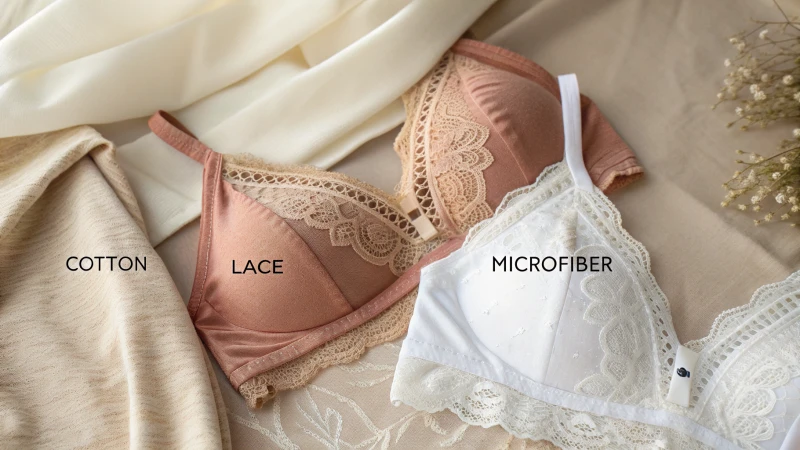
The Importance of Fabric in Bras
I remember the first time I truly appreciated the fabric of a bra. It was a hot summer day, and the difference between feeling clammy and cool was all in the material I chose. Fabric choice is a game-changer when it comes to a bra's comfort, durability, and functionality. Each material offers unique benefits in breathability9, stretch, and moisture-wicking properties.
| Fabric Type | Properties | Best For |
|---|---|---|
| Cotton | Soft, breathable, hypoallergenic | Everyday wear |
| Microfiber | Smooth, lightweight, moisture-wicking | Sports bras |
| Lace | Decorative, less supportive | Special occasions |
| Spandex/Elastane | Stretchy, form-fitting | Adding flexibility to designs |
Breathability and Comfort
Growing up in a warm climate, I learned to value breathable fabrics like cotton and microfiber. These materials are perfect for active days or simply staying cool. They let air circulate freely, reducing sweat build-up and preventing irritation.
Support and Structure
The right fabric doesn’t just keep you comfortable; it also supports you in all the right ways. I’ve found that spandex adds the necessary elasticity to adapt to my movements without losing shape. And when it comes to areas needing extra support, like side panels, power mesh10 does wonders.
Moisture-Wicking Fabrics
For anyone who’s ever hit the gym in the wrong bra fabric, you know how unpleasant it can be. Moisture-wicking materials like polyester blends are a godsend, drawing sweat away from the body and keeping you dry.
Allergies and Skin Sensitivity
Sensitive skin can make bra shopping feel like a nightmare. I’ve discovered that hypoallergenic fabrics such as organic cotton really make a difference. They minimize allergic reactions or rashes—just be sure to check for any added chemicals or dyes that could irritate sensitive skin.
By understanding these aspects, I've made more informed decisions about bra materials, which has significantly improved my comfort and functionality for various occasions. Exploring how different fabrics11 impact clothing choices can help you find the perfect match for your lifestyle too.
Cotton bras are best for sports activities.False
Microfiber, not cotton, is preferred for sports due to moisture-wicking.
Lace bras offer less support than microfiber bras.True
Lace is decorative and less supportive, while microfiber offers more support.
Conclusion
Discover essential tips for finding a supportive bra, including correct sizing, snug band fit, full-coverage cups, breathable materials, and adjustable features for ultimate comfort and functionality.
Accurate measurements are vital for finding the right bra size, ensuring proper support. ↩
Discover which materials provide both comfort and optimal support in bras. ↩
Learn how different bra designs meet specific needs like sports or everyday wear. ↩
Discover the best reinforced underwire bras that provide excellent support for larger busts. ↩
Find professional bra fitting services to ensure you get the perfect size and fit. ↩
Explore expert tips on shopping for bras that cater specifically to larger busts. ↩
Use this tool for a quick and accurate bra size calculation based on your measurements. ↩
Explore various bra cup styles to find what suits your body shape best for optimal support. ↩
This link explores the impact of breathable fabrics on comfort, essential for understanding how they enhance bra wearability. ↩
Learn about power mesh's role in providing extra support in bras, ideal for those needing enhanced structural support. ↩
Discover various bra fabrics' unique characteristics to choose the best material for comfort and support. ↩

